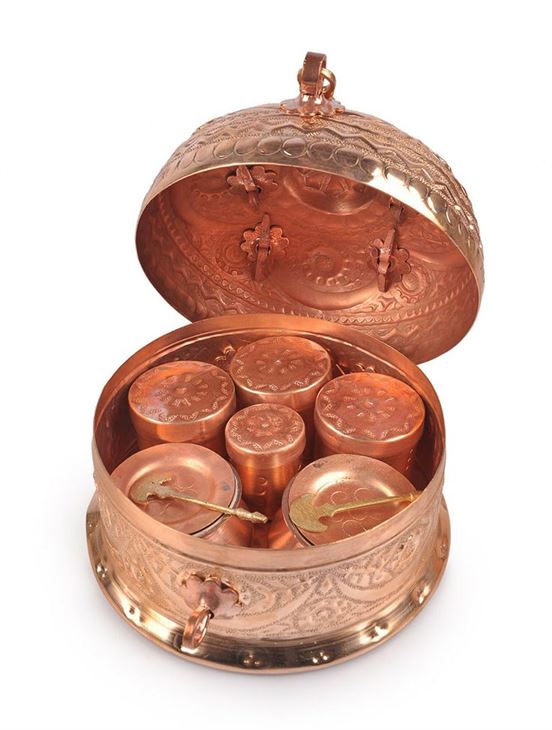“Meri Tehzeeb ke sab rang bhi Kya le gayiN daadi
LaboN par paan Ki surkhi, na hathoN me “sarauta” hai!!”
#NadeemGuft
While growing up the sight of a paandaan was a common one in our houses.
Most houses kept a functioning paandaan and even if the lady/gentleman of the house didn’t eat it , it was kept to be offered to guests.
The paandaan itself consists of a fitted tray on top on which the leaves were kept in a damp cloth and underneath the receptacles for chuna, kathha, supari, tambaakoo, laung, elaichi etc
The pan would be made applying all or some of the ingredients and folded into a triangular shape called ‘gilori’. The act of folding was an art
This would then be covered with silver warq and held together by nailing it with a laung -clove.
It would then be kept in a khasdaan , sonetimes strung in a silver guchcha (like a keyring with tiny silver nails.
So steeped was the paan in Indian culture that allowance given to women would be called paan kharch.
Ghiyas-ud-din Khalji, the Sultan of Mandu (r. 1469–1500), watches as tender betel leaves of the finest quality are spread out and rosewater is sprinkled on them, while saffron is also added. An elaborate betel chew or paan would contain fragrant spices and rose preserves with chopped areca nuts, folio from 16th century cookbook, Nimmatnama-i Nasiruddin-Shahi
Paan is said to be a blood purifier, has strong digestive properties, and is an oral deodorant.
When making paan one takes a tender, water soaked betel leaf. The spine of the leaf is broken because during rains, water collects in it.
The top and the bottom are cut about half a centimeter.
a bit of slaked lime paste chuna is applied on it
kattha is applied generously, mixing it well with his fingertip. Kathha is a reddish-brown solution from the bark of the tree Acacia catechu. After that other ingredients are as per taste.
But we are spoiling the name of a wonderful tradition by spitting it all over the place.
In the middle east paan is banned because people from the sub continent spit all over. In fact in Muscat I heard if the police catch someone chewing paan they tape his/her mouth and take them to the police station!
ankara escort
çankaya escort
ankara escort
çankaya escort
escort ankara
çankaya escort
escort bayan çankaya
istanbul rus escort
eryaman escort
escort bayan ankara
ankara escort
kızılay escort
istanbul escort
ankara escort
ankara rus escort
escort çankaya
ankara escort bayan
istanbul rus Escort
atasehir Escort
beylikduzu Escort
Ankara Escort
malatya Escort
kuşadası Escort
gaziantep Escort
izmir Escort
Betel or bétele (Portuguese) derived from the Malayalam word vettila. Vetel in Malayalam means Betel and ila means leaf
The betel leaf is known as Paan in Bangla and Hindi, Tambula and Nagavalli in Sanskrit, and Tanbul in Persian.
It is a creeper and needs highland and very fertile land
There is archaeological evidence that the betel leaves have been chewed along with the areca nut since very ancient times.
Its use in India dates back to 400 BC. As per ancient books of Ayurveda, Charaka, Sushruta Samhitas and Kashyapa Bhojanakalpa, the practice of chewing betel leaves after meals became common between 75 AD and 300 AD.
Vatsyayana, the author of Kamasutra, included the betel leaf in the solah singar or the sixteen adornments.
Towards the 13th century, European traveller Marco Polo recorded, betel chewing among kings and nobles in India.
In India it was popularised by Nur Jahan.

